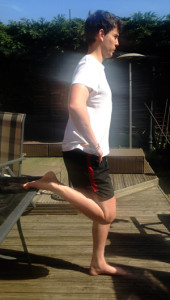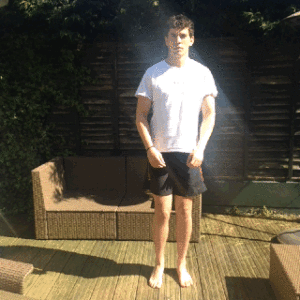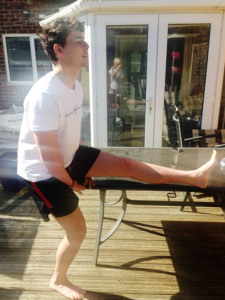I’m going to make a bold statement here; stretching before a run or weights is bad for you. There, I said it. But before you condemn me to an asylum, hear me out.
When I write about stretching, I mean static stretching. You know the kind, the long, hard stretches that you tend to push, bounce and wince to as though your hamstring is about to snap! The holding your ankle with the opposite hand, whilst tugging on your ear lobe and sticking your tongue out stretches. Utter nonsense! All of them! Why? Well, when you perform these kind of stretches it actually destabilises the targeted muscle, which increases the risk or likelihood of injury. Not something which you aim for, I’m sure. Static stretches don’t warm you up either, and as I’m sure you’re aware, warm muscles are harder to injure than cold ones.
So, am I saying you shouldn’t stretch at all? Well, no thats not entirely what I recommend. What I do advise, is a different form of stretching known as, ‘dynamic stretching’ . A few examples of these would be; air squats, high knees, heels to bums. This type of stretching should be like a mini workout, you want to activate the muscles as opposed to pulling them as tight as possible. This will also increase flexibility, raise your body temperature and set you muscles motor patterns (activate them).
For me the proof was in the proverbial pudding when the niggle in the centre of my right quad (front of the thigh) disappeared, previously, I’d only have to kick a football and then I would feel a burning sensation, which left me walking like Peg Leg the pirate. But since I started performing dynamic stretches prior to exercise, I haven’t once felt a thing, and now I’m squatting 1.5 times my body weight, a lot of weight for my slender (ok, thin) legs to handle.
Personally, whenever I am about to run or perform heavy weights, I complete 26-30 ‘over & unders’. These are executed as follows; stand with legs shoulder width apart, imagine theres a knee high bench to your right hand side, bring your knee as high as you can and move as though you would side step over the bench, follow this movement with your left leg and then perform an air squat in the reverse direction. That’s one repetition. Repeat the stretch with the left leg and that’s two. You get the idea. This exercise uses a full range of motion in the back, hip and knee joints, therefore, activating all of the muscles in the area and in turn, decreasing the likelihood of injury.
Click on the photo below to see the stretch in action.
Should you cut out static stretching altogether? Again, no. I perform static stretches for 10-15 minutes every night and this is when I recommend that you do them. However, a slight alteration would be to perform the stretches for one minute at a time, rather than ten seconds, three or four times. This will make you more supple, give you greater elasticity, and can elongate the muscle as well as providing you with a better running posture. These are four simple stretches which I prescribe;
[four]Quad Stretch;
 [/four] [four_middle]Glute Stretch;
[/four] [four_middle]Glute Stretch;
 [/four_middle] [four_middle]Groin Stretch;
[/four_middle] [four_middle]Groin Stretch;
 [/four_middle] [four_last]Hamstring Stretch;
[/four_middle] [four_last]Hamstring Stretch;
[/four_last]
I’m using a table here, but you can use a window sill, sofa, exercise box or anything else around hip height.
Remember, next time you’re exercising ‘activate’ the muscle, don’t destabilise it.
Thanks for reading,
Gareth.
If you have any thoughts or questions write in the comment box below, tweet me gareth_crook or email me on [email protected] and we’ll chat.


